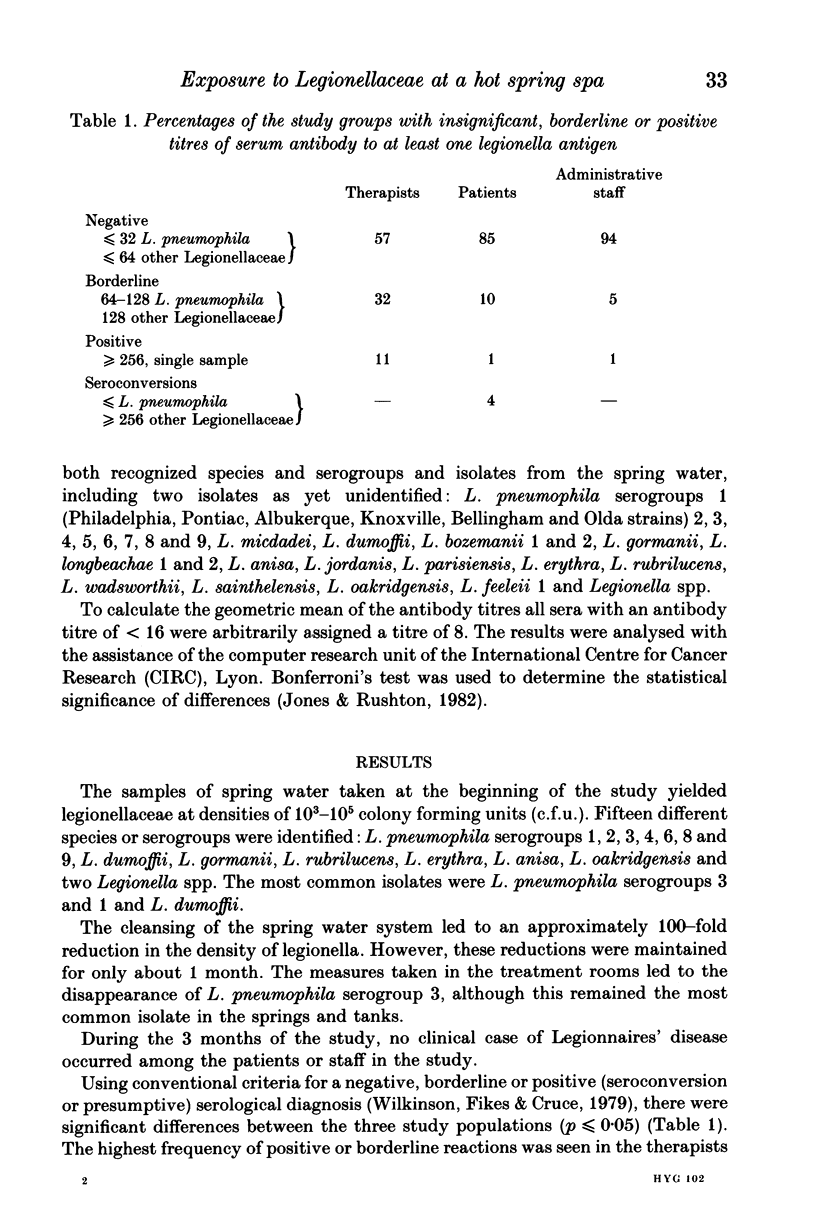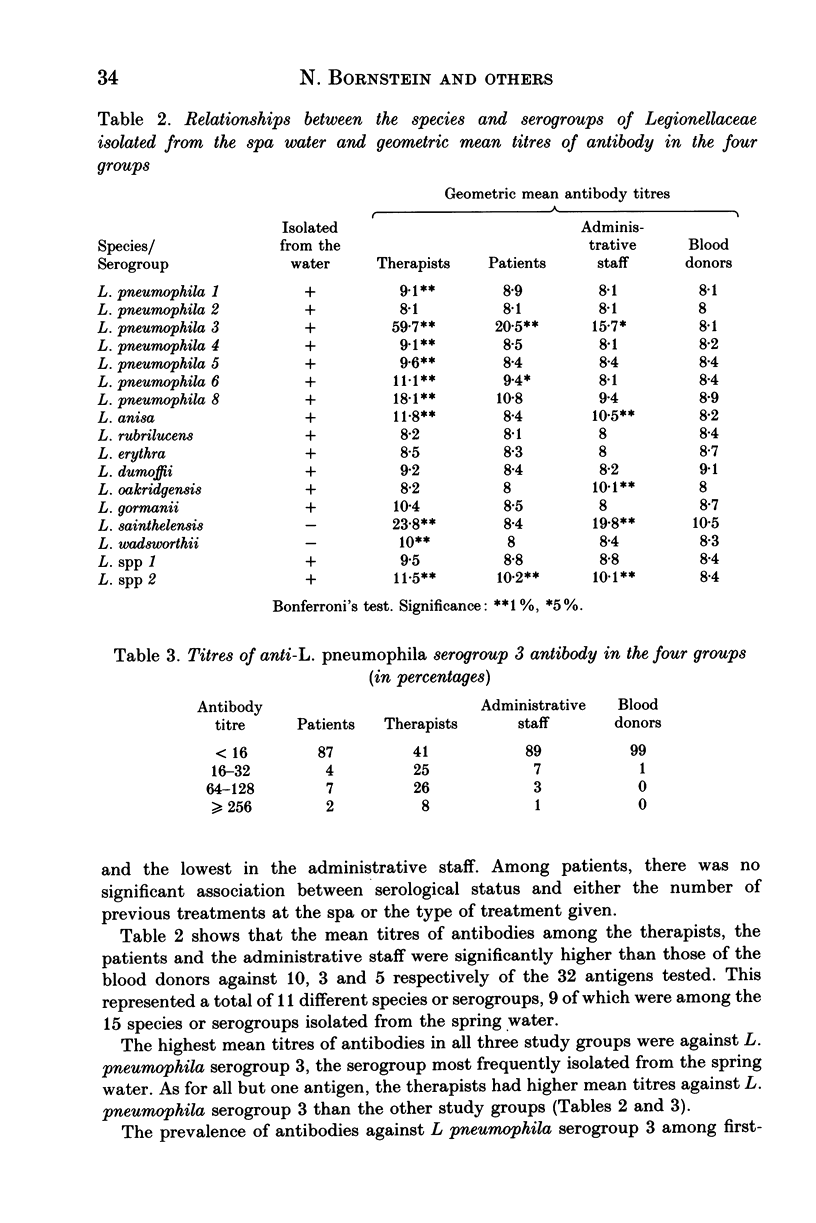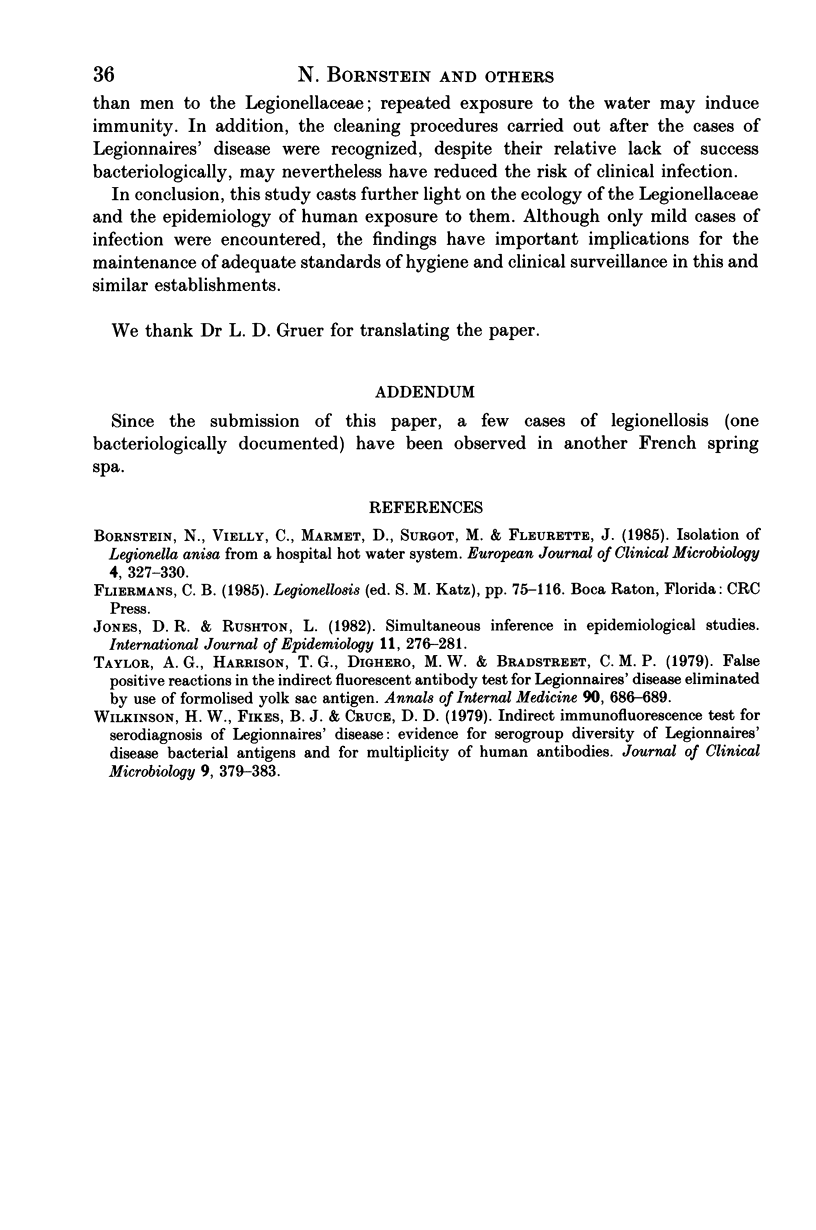Abstract
Following the occurrence of five cases of Legionnaires' disease among patients and therapists at a French hot spring spa, a series of cleansing procedures and an epidemiological study were undertaken. During a 3-month period, the spring water was repeatedly sampled. Serum samples were taken from 689 randomly selected patients, 230 therapists, 134 administrative staff and a control group of 904 blood donors. Legionellaceae were present in the spring water at concentrations of 10(3)-10(5) colony forming units/l. Fifteen different species or serogroups were isolated with Legionella pneumophila serogroups 3 and 1 predominating. No clinical cases of Legionnaires disease were observed during the study. However, 11% of the therapists and 5% of the patients either had a high titre of antibody (greater than or equal to 256) to at least one species or serogroup or seroconverted during the study. Mean antibody titres in the three study groups were significantly higher than those in the blood donors against 11 of the 32 legionella antigens tested. Nine of these 11 antigens corresponded to species or serogroups isolated from the spring water. The highest mean antibody titres in all three study groups were against L. pneumophila serogroup 3, the most common legionella in the spring water. These findings have important implications for the maintenance of adequate standards of hygiene, bacteriological sampling and clinical surveillance in this and similar establishments.
Full text
PDF





Selected References
These references are in PubMed. This may not be the complete list of references from this article.
- Bornstein N., Vieilly C., Marmet D., Surgot M., Fleurette J. Isolation of Legionella anisa from a hospital hot water system. Eur J Clin Microbiol. 1985 Jun;4(3):327–330. doi: 10.1007/BF02013661. [DOI] [PubMed] [Google Scholar]
- Jones D. R., Rushton L. Simultaneous inference in epidemiological studies. Int J Epidemiol. 1982 Sep;11(3):276–282. doi: 10.1093/ije/11.3.276. [DOI] [PubMed] [Google Scholar]
- Taylor A. G., Harrison T. G., Dighero M. W., Bradstreet C. M. False positive reactions in the indirect fluorescent antibody test for Legionnaires' disease eliminated by use of formolised yolk-sac antigen. Ann Intern Med. 1979 Apr;90(4):686–689. doi: 10.7326/0003-4819-90-4-686. [DOI] [PubMed] [Google Scholar]
- Wilkinson H. W., Fikes B. J., Cruce D. D. Indirect immunofluorescence test for serodiagnosis of Legionnaires disease: evidence for serogroup diversity of Legionnaires disease bacterial antigens and for multiple specificity of human antibodies. J Clin Microbiol. 1979 Mar;9(3):379–383. doi: 10.1128/jcm.9.3.379-383.1979. [DOI] [PMC free article] [PubMed] [Google Scholar]


